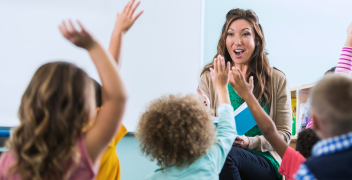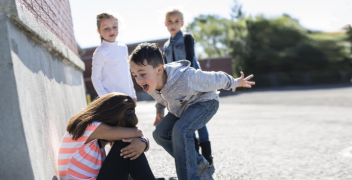The Power of the Bystander and a Positive School Climate
The social climate of a school has a significant impact on students' wellbeing, including their academic and social development. When students and school staff ignore bullying behaviors, they are sending the message that bullying is acceptable or something that can’t be helped. In schools where aggression is prevalent, students' sense of safety declines and they are less likely to speak up or intervene when they witness bullying. The way to combat this problem is by working toward a positive school environment where inclusion, respect for differences, and trust between students and teachers are encouraged.
The Power of the Bystander
When someone witnesses bullying, called 'the bystander', the choices they make as a bystander can either reinforce or discourage bullying behavior. A bystander that takes positive action such as supporting the victim, asking adults or peers to help, not standing and watching the situation, or choosing not to share offensive or hurtful content (e.g. texts, pictures), can shift the attention and power away from the person doing the bullying and help put an end to the behavior. In contrast, a passive bystander who ignores or does nothing when they see bullying can be perceived as giving permission for the bullying to continue. Sometimes bystanders choose to take negative action, in that they assist or reinforce the bullying. For example, by laughing or verbally egging on the altercation, videoing the bullying, or not saying anything to a person who is purposefully trying to exclude to hurt someone.
The person (or people) who chooses to bully only holds power if that behavior goes unchallenged. When bystanders choose to speak up and show compassion and courage in defense of a bullying victim, it creates an opportunity for others to also provide support, problem-solve positive solutions to conflict, and/or for adults to provide appropriate consequences. In doing so, we can reduce harm and help create a safer environment for everyone involved.
A Positive School Climate
All staff play an important role in promoting a positive school environment by communicating that bullying is unacceptable. School staff should be trained to promote positive social relationships in their students, as well as to manage and defuse aggression and bullying behavior. These trainings are essential to a school’s violence prevention plan. Staff must learn to be especially vigilant identifying the more subtle and covert forms of bullying, e.g., relational bullying, in order to ensure that students feel safe and secure. With training, school staff can introduce non-violent alternatives for resolving conflict and give student bystanders the awareness and tools they need to take positive action if and when bullying does occur.
Read more about CHOP’s Preventing Aggression in Schools Everyday (PRAISE) program, a classroom-based problem-solving and bullying prevention program with separate curricula for 1st and 2nd (PRAISE: Friendship Explorers) and 3rd to 5th grade students (PRAISE: Voyagers). The program aims to improve children's friendship skills, empathy and problem-solving abilities, decrease levels of aggressive behavior, and improve positive bystander behaviors.
Read more about the teacher training and coaching program called the Bullying Classroom Check-Up (BCCU). BCCU leverages evidence-based classroom management strategies, trauma-informed instructional practice, social-emotional learning skills, and positive behavior interventions and supports (PBIS) approaches to detect, prevent, and respond to bullying and aggression. For example, it provides brief training and coaching for teachers to use in-the-moment responses to student conflicts and bullying so they can encourage a positive climate while prioritizing teaching time.








